Things You Should Know Before You Head to the Starting Line
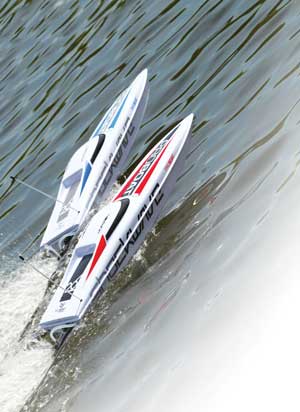
Stirring up the local pond with your favorite RC boat is a great way to spend the day. Doing it with a friend or two is even better when you can race for bragging rights. If you and your buddies are the competitive types then naturally you’ll eventually want to find organized boat races in your area. Something to keep in mind is that two or three guys on a pond is very different from up to ten boats competing for first place on a larger course. Elsewhere in this issue of RC BOAT you will find information on what to expect when you show up at a race event. Here we will focus on some of the rules you will need to be aware of before you take your place on the starting line for the first time.
There are two sanctioned organizations for boat racing and we have provided you with links and QR codes for these groups within the graphics on the next page. IMPBA is the International Model power Boat Association. NAMBA is the North American Model Boat Association. Organized events are likely to follow the rules for one of these two groups. Their courses are similar in size with the main difference being the number of buoys used to mark the turns.
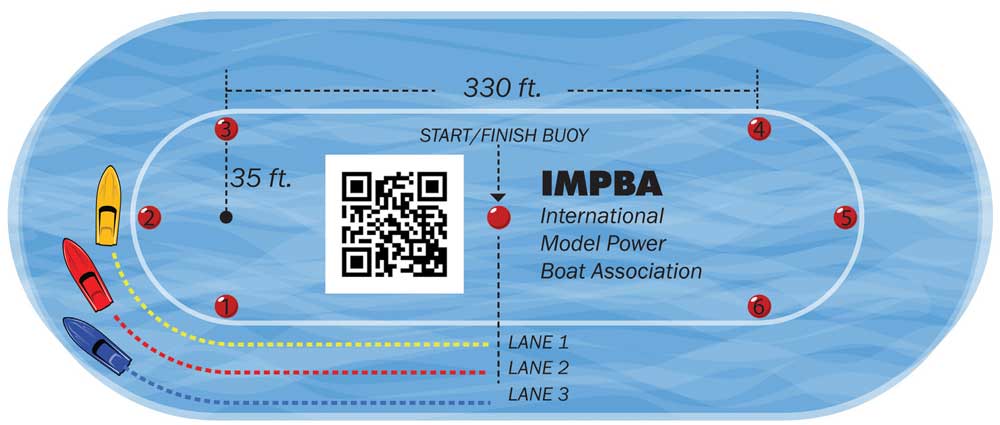
GET FAMILIAR WITH THE COURSE
It’s likely that you didn’t have any buoys or other markers to navigate around on your local pond so it may take some getting used to the fact that you now have “lanes” to constrain your driving path. You’ll want to arrive at the event early enough to get some practice time in before the heats begin. The races are run clockwise on an oval course. The turns are marked with either three or five buoys, depending on which rules are followed, with an “invisible” arc connecting them. Drive at no more than half throttle as you learn to judge the distance between your boat and the turn buoys. Ultimately you want to be as close to this “line” as possible without crossing it to avoid any penalties. Your boat must maintain a straight line from one turn to the next. Swerving may add a level of fun on the local pond, but can result in a penalty on a race course. Coming out of the corners be careful not to oversteer into the center of the course. Drive this until you are comfortable with how you handle the entire course.
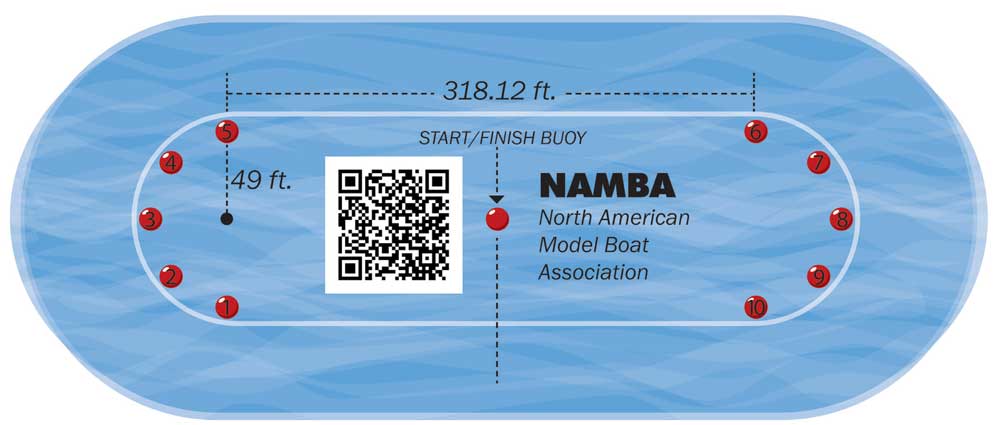
DRIVE WITH THE PACK
It’s one thing to master the course when you are the only one on it. It is another thing to master it with other boats around you. It is important to keep an eye on where they are and stay in control of your boat while navigating through the wake of others’ boats. It’s time to hone your peripheral vision and reactionary skills. Start with just one or two other boats if possible. Try to enlist the help of some of the experienced racers. Most are likely to be willing to help a newbie. Drive the course while in close proximity of the other boat(s). Begin by first following slightly to the rear and off to the right. Keep your focus on your boat while observing, anticipating and reacting to the movements of the others. If they sweep wide on the turn you need to sweep just a bit wider. As the distance between boats becomes greater you still need to remain conscious of their locations. This is where peripheral vision comes into play. Eventually you want to be able to shift your vision to the other boat briefly while keeping your boat in your peripheral view, but this will come with experience. It is critical to be aware of what is in front of you and to the sides at all times. Don’t worry about what’s behind you. It’s the responsibility of the drivers behind you to pay attention to what is in front of them.
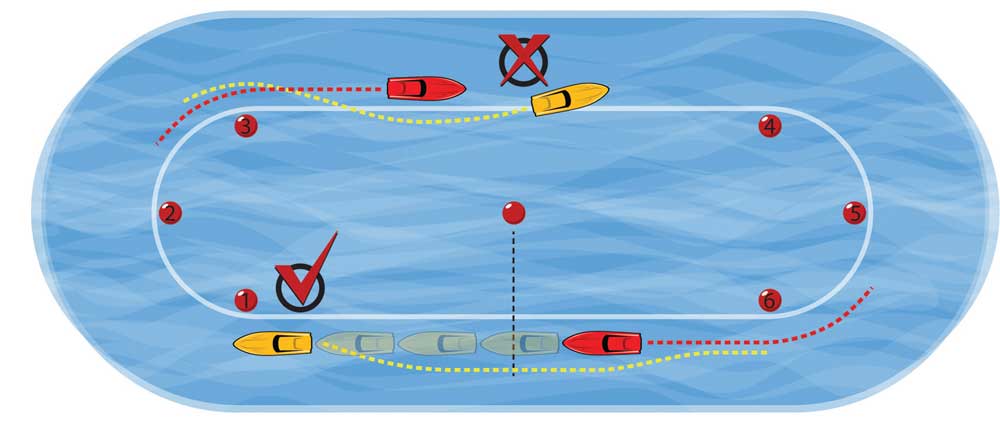
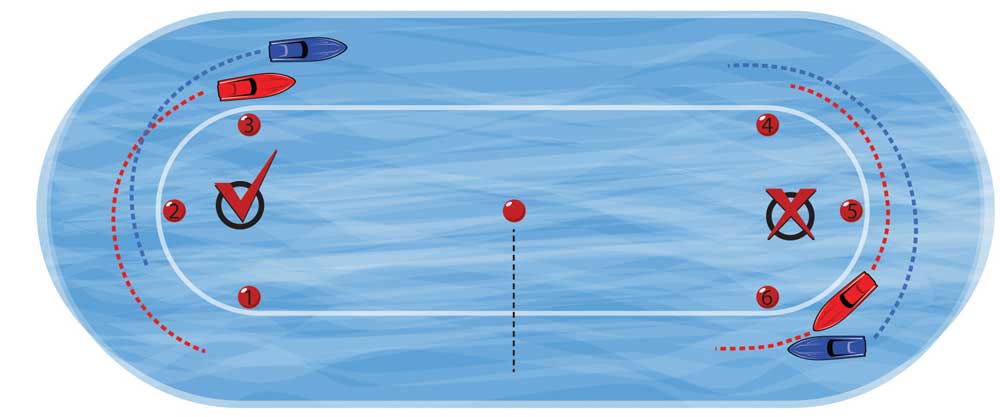
INVISIBLE LANES AND LEGAL PASSING
There are indeed lanes, however the lines defining them are imaginary. They are basically as wide as the boats that occupy them. You are at the mercy of the race officials when it comes to lane infractions. At any given time the boat closest to the buoys has the inside lane. You are permitted to pass this boat and overtake the inside lane but always pass on the left (outside) and do not pull in front of the other boat until you are at least three boat lengths ahead. Four or five boat lengths will help avoid a penalty call if the officials don’t see the same three boat lengths that you did.
Changing lanes behind other boats require focus. You will have the boat’s wake to deal with so you should cross it at about a 45 degree angle to avoid upsetting your craft. Avoid the rooster tail of water being showered your way as well as this has the potential to make your boat unstable not to mention the possibility of water getting into the hull. If another boat has passed you and enters your lane as it approaches the turn, you may need to throttle back to let him in. You always want to play nice because the table could be turned on the next lap.
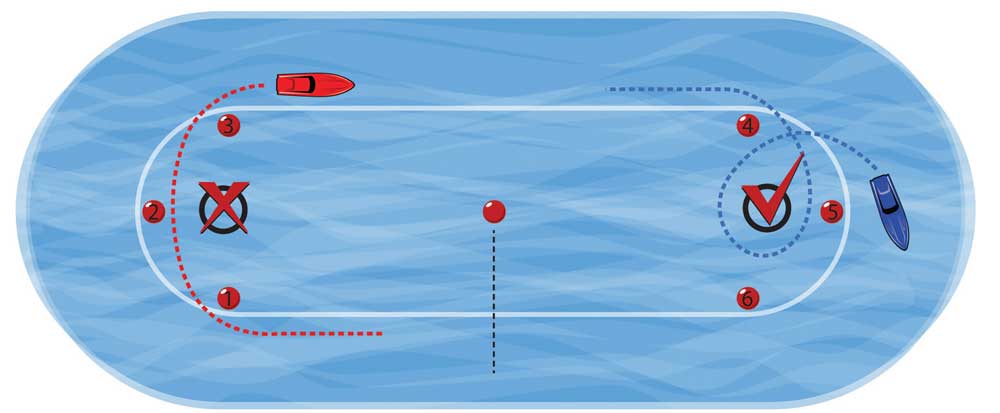

RACING INFRACTIONS
There are several ways to be penalized. Many are going to be based on the officials interpretation of what they saw. You may not always agree but you always need to smile and nod then move on. Some of the infractions are described with the graphics on these pages. You can have a penalty called for something as simple as cutting a buoy on the turn or something more serious like running into a dead boat. Sometimes you can get away with a warning for a lane infraction if no other boat was affected. Again, it is up to the individual race official. Each organization has its own set of rules and penalties so it’s best to download their rule books and familiarize yourself with them prior to entering a race. The more you know going in, the better off you will be once your names is on the roster.
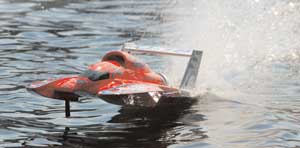
FINAL THOUGHTS
The bottom line here is that racing can be a fun part of any aspect of the RC hobby. Just as with car and truck races there are rules you need to know, some official and some are just commons sense. Practice driving close with your buddies on the local pond because proper control is only learned through experience. Keep an open mind and remember this is all about having fun with a little competition. After all…these are basically toy boats. Keep the stress low and the fun high. Now go race something!
LINKS
International Model Power Boat Association, IMPBA, impba.net
North American Model Boat Association, NAMBA, namba.com
 RC Boat Magazine The World's Leading Radio Control Boating Magazine
RC Boat Magazine The World's Leading Radio Control Boating Magazine
